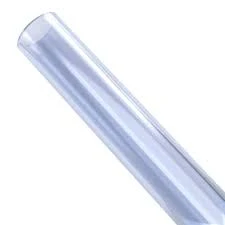Nov . 06, 2024 21:58 Back to list
Exploring the Benefits and Uses of HDPE Tubing in Various Applications
Exploring the Benefits and Applications of HDPE Tubes
High-Density Polyethylene (HDPE) tubes have become an essential component across various industries due to their unique properties and versatility. Made from petroleum, HDPE is a thermoplastic polymer that boasts a high strength-to-density ratio, making it a preferred choice in many applications ranging from construction to agriculture.
Properties of HDPE Tubes
One of the key advantages of HDPE tubes is their durability. They are designed to withstand harsh environmental conditions, including exposure to chemicals, UV light, and extreme temperatures. This resilience makes HDPE an ideal material for piping systems that require longevity and reliability. Furthermore, HDPE does not corrode or rust, which significantly prolongs the lifespan of the products manufactured from it.
Another significant property of HDPE tubes is their lightweight nature. Compared to traditional materials like metal or concrete, HDPE is considerably lighter, making transportation and installation easier and more cost-effective. This aspect is particularly valuable in applications such as water supply lines and drainage systems where extensive piping is necessary.
HDPE tubes also offer excellent flexibility and can be molded into various shapes without losing their structural integrity. This flexibility allows for quick and efficient installation, especially in areas that may have complex layouts or obstacles.
Applications of HDPE Tubes
The applications of HDPE tubes are vast, transcending multiple sectors. In the construction industry, HDPE pipes are commonly used for water supply and sewage systems. Their resistance to chemicals and minimal leakage properties make them an optimal choice for municipalities looking to deliver safe drinking water and manage wastewater efficiently.
hdpe tube

In agriculture, HDPE tubes play a crucial role in irrigation systems. They are utilized for drip irrigation and sprinkler systems, enabling effective water management in large-scale farming operations. The smooth interior surface of HDPE pipes reduces friction loss, ensuring that water reaches crops efficiently while also minimizing evaporation.
Another notable application is in the telecommunication industry. HDPE tubing is often used as a protective conduit for cables and fiber optics. The flexibility and protective qualities of HDPE help safeguard fragile cables from external damage, ensuring uninterrupted communication services.
Furthermore, the use of HDPE tubes is gaining traction in the oil and gas sector. These tubes are often employed in the transportation of hydrocarbons due to their resistance to corrosion and impact. This application is particularly important as it ensures the safe and efficient movement of resources in varying environments.
Sustainability and Environmental Impact
As the world increasingly focuses on environmental sustainability, HDPE tubes shine in this regard as well. Many HDPE products are made from recycled materials, reducing the demand for virgin plastic and promoting a circular economy. Additionally, HDPE itself is fully recyclable, which aligns with global sustainability goals.
Moreover, HDPE tubes contribute to environmental protection. Their durability and low maintenance reduce the need for frequent replacements, decreasing waste generation over time. This factor is essential in mitigating the environmental footprint associated with construction and infrastructure development.
Conclusion
In summary, HDPE tubes offer an array of benefits that make them indispensable in modern applications. Their exceptional durability, lightweight nature, flexibility, and resistance to various environmental factors position them favorably in industries ranging from construction and agriculture to telecommunications and oil and gas. As the world continues to prioritize sustainability, HDPE’s recyclability and longevity further enhance its appeal. Consequently, the future of HDPE tubes looks promising, with continued innovation and increasing adoption expected across multiple sectors. Whether it's improving infrastructure, enhancing agricultural practices, or advancing telecommunications, HDPE tubes are set to play a vital role in shaping the future.
-
High-Quality PPR Pipes and Fittings Durable ERA PPR & PVC PPR Solutions
NewsJul.08,2025
-
Black HDPE Cutting Board - Durable, Non-Porous & Food Safe HDPE Plastic Cutting Board
NewsJul.08,2025
-
High-Quality CPVC Panel Durable HDPE & PVC Panels Supplier
NewsJul.08,2025
-
Double PE Welding Rod Supplier - High Strength, Durable & Versatile Welding Solutions
NewsJul.07,2025
-
High-Quality PVC-O Pipe Supplier Durable 75mm PVC Pipe & Connections Leading PVC Pipe Company
NewsJul.07,2025
-
HDPE Drainage Pipe Supplier – Durable & Corrosion-Resistant Solutions
NewsJul.06,2025

